
Бесплатный фрагмент - The Dot of Noah’s-Darwin’s: the Ark, evolution, totemism and interspecific wars
Correspondence with anthropological journals
The Dot of Noah’s-Darwin’s: the Ark, evolution, totemism and interspecific wars
The study on this topic and the writing of the article was conducted at the expense of the author. There were no co-authors at all stages of research. The conflict of interests is absent, article earlier was not published.
The position and scientific degree at the author at the moment is absent.
Author-correspondent: Kot Oleg. Email: oll.oll13@yahoo.com
https://orcid.org/0000-0003-1727-5513
Abstract. This article is written for the sole purpose — to show the solution of the problem of the genesis of totemism through interdisciplinary approaches. In article the mechanism of emergence of the belief in kinship between a primitive genera and classes of fauna is described. The concept of the last stages of extinction of totemism or its liminality is introduced. This involves the complete exclusion from the search of open systems, including the pathogenesis of the Neanderthal in Paleolithic. The closed system are considered by methods of sea psychology (a bible ark of Noah as the dot of Noah’s-Darwin’s). The method of comparative analysis proves the complete interrelatedness of relationships within the totemic complex with the mutual relations that have arisen within the closed system described in the book of Genesis as the Biblical ark of Noah.
Keywords: the dot of Noah’s-Darwin’s, totemism, open systems, closed systems, PTSD.
1. Introduction
The history of the study of Totemism began with a universally known error — the English soldier, at a later time the furs salesman and translator, John Long incorrectly interpreted the concept of “Ototem” in the full description of his travels (Long 1904 [1791]). The way to solve the problem for today is reliably closed. “In the past the theoretical discussion of totemism was almost entirely concerned with speculations as to its possible origin. <…> To be able to speak of an origin of totemism we must assume that all these diverse institutions that we include under the one general term have been derived by successive modifications from a single form. There does not seem to me to be a particle of evidence to justify such an assumption. But even if we make it we can still only speculate as to what this original form of totemism may have been, as to the enormously complex series of events which could have produced from it the various existing totemic systems, and as to where, when, and how that hypothetical original form of totemism came into existence” (Radcliffe-Brown 1952, p. 122).
The Editor of Current Anthropology Mark Aldenderfer, to the author’s of this article: “However, your manuscript remains speculative and presents little evidence for the hypothesis” (2018, CA MS 303267).
Historiography of the problem (Tokarev 1978; 1990, pp. 51–60, pp. 564–576; Khaitun 1958, pp. 108–142; Levi-Strauss [1962] 1994, pp. 38–47, pp. 108–110; Dmitriyeva 2014, pp. 263–283). The latter noted:
From the work of Ethnographers-Australologists it is clear, that at least in Australia the word “totemism” is sometimes called different and irreducible to each other phenomena. The problem is (and it’s common the bad penny of Ethnology), that these different phenomena traditionally have to be called the same term. <…> Therefore, the only thing that can contribute to mutual understanding in this case is a preliminary definition of the concepts “totemism” and “totem” (ibid, p. 280).
Actually it is the citation belongs to Gladys Reichard (1938, p. 430):
Too much has been written of totemism in its different aspects… to permit leaving it entirely out of the discussion… Since the manifestations are so varied in different parts of the world, since their resemblances are only apparent, and since they are phenomena which may occur in many settings not related to real or supposed consanguinity, they can by no means be fitted into a single category (Levi-Strauss [1964] 1991, p. 7).
The quotations above indicates that the fragments of observations, brought from field expeditions, were not amenable to complete comprehension — the roots of the phenomenon were absent and, accordingly, the conclusions based on these materials began to be critically interpreted. Starting with Goldenweiser and ending with the founder of the school of structuralism Levi-Strauss, a point of view on the totemic complex as on artificially created by the predecessors (from McLennan to Fraser), but actually consisting of completely dissimilar phenomena, was formed and maintained in the future. “The supposed totemism eludes all effort at absolute definition” (Levi-Strauss [1964] 1991, p. 5).
By an answer for inability of ethnography to explain this phenomenon became there is arises an perceptions of the emergence of totemic beliefs among Neanderthals — the ending of the Middle Paleolithic, the beginning of the Upper Paleolithic, the culture of the Mousterian (Semenov [1966] 2002, pp. 427–430). But and this method has failed to bring decisive arguments in its favor.
2. The Dot of Noah’s-Darwin’s: The playback of the closed system in totemism
Errors of the methodological nature of the researchers of the phenomenon of totemism. The first. None of the scientists tried to connect the issue of the origin of the relationship of man and animal with the phenomena of natural disasters. However, the character of totemic relations directly indicates the existence of an extreme situation, after which animals acquire the highest value for man. Totemism was studied in primitive peoples in the open systems of prairies, mountains, plains, forests, savannahs, where there are no conditions for the appearance of such ties of kinship. Soviet scientists were looking for traces of the phenomenon in the burials and caves of Neanderthals (open systems of the Paleolithic). But completely closed systems, really arising from disasters, were not considered by anyone, which indicates an actual narrowing of the search.
The second. The book Genesis directly points out catastrophism, but in the scientific worldview of the XIX and XX centuries there was no place for the Bible. Literally all, who dealt with the problem of the totemic complex, rejected the Scripture as a scientific source, but at the same time many remained the believing people. Strehlow, Schmidt, Fison (missionaries, priests of various faiths), Durkheim, Levi-Strauss, son and grandson of rabbi, two tens more Jewish scientists, the people of the Torah to the marrow of the bones, have passed by the obvious. Tabooing of the totem’s or prohibition on the use in food is one of bases of nature of totem. It is enough to juxtapose the totems of primitive peoples with the pages of book of Genesis to understand that this is a 100% continuation in space and time practice of the fasting. And those who first tabooing the animal, the bird or the amphibian as a totem, acted in the same way as Adam and Eve. And we can assume that they were their remote descendants. But if the book of Genesis describes the emergence of the institution of fasting, the entire chronology of the emergence of totemism and its main institution — tabooing of the totem’s was rests only in the events described from the sixth to eleventh chapters of the book of Genesis.
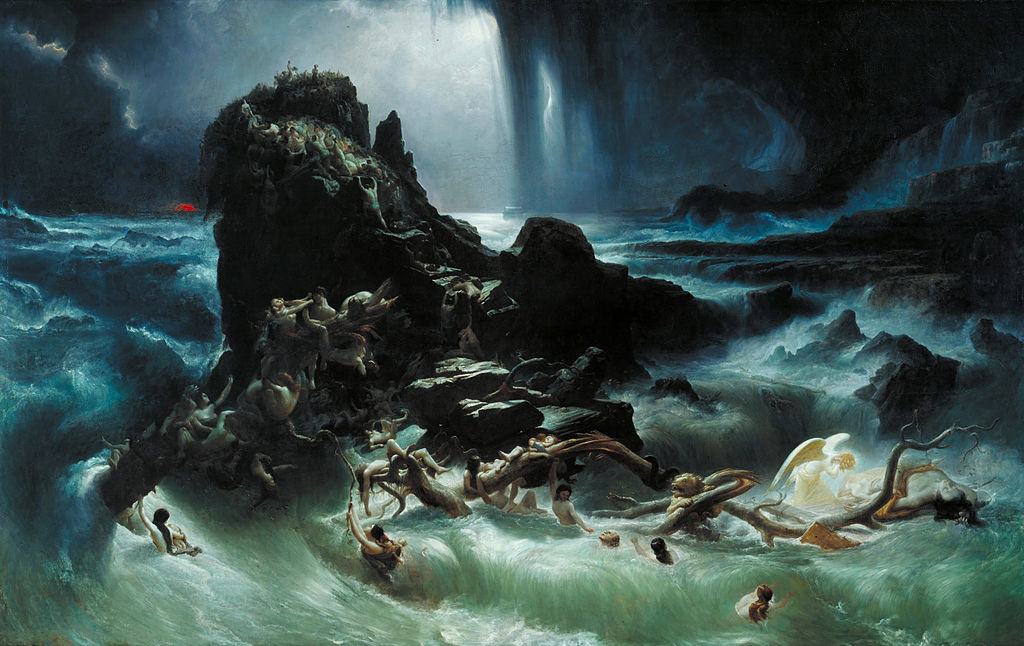
Perhaps, only therefore the vast majority of researchers of the West and East (an exception Semenov, Eylderman) carried a totemism to the category of primitive religions. Thus, the first, grossest classification error was made. Totemism from the beginning to the end was, first of all, social and domestic phenomenon, which took place in the conditions of an emergency situation and certainly not a religion.
In these two reasons lies the failure of the army of scientists of the XIX and XX century. They studied the last stages of dying totemism with its binding to the specific historical conditions of open systems. For example, the bond of myths about Aboriginal totemic ancestors to the territory of his community in Australia. But closed systems were not considered by them, because none of them could solve the problem of nature of the tabooing totem. Studying the problem, it was impossible to understand what the meaning of food bans, when around the abundance of animal and plant mass? This is approaching the absurd. Perhaps, there is a hidden event, which is firmly forgotten, but it was the impetus for the emergence of taboos. Most likely, the hunger of the planetary scale due to the lack of animal protein duration of 30–40 thousand years. And if the beginning of this phenomenon was connected with a global disaster, then formation of persistent persuasion in the common kinship of a small number of people and animals has become a matter of time. Therefore it is possible to assume that taboos on certain kind of animals or birds arise much later this period of time. The biblical flood is analogous to such a catastrophe. But by virtue of the unscientific nature, the book of Genesis is rejected by scientists to this day. So there was a notorious the problem of totemism in modern ethnography.
For what is the need to correlate totemism with a completely closed system, cut off from the rest of the world? Only because of the main characteristic of a primitive totem. Tabooing or prohibition (restriction) in food intake indicates the coercion, extreme nature of the situation, which and close wasn’t found at the Australian aborigines two hundred years ago or among American Indians four centuries ago by European settlers. On the contrary, the indigenous people prospered.
In totemism there are always two components — a group of people and a group of animals, birds or plants. Consider them in the same sequence.
3. A group of people
1910 year. Having collided with an avalanche of the unsystematic material named totemism, A. A. Goldenweiser has tried to allocate from it the common, which could be inherent in all primitive peoples. “The content, then, must be expressed in the most general terms. We saw that one common factor in the various ethnic complexes generally termed ‘totemism’ is an association which the occurs between certain religious phenomena, on the one hand, and certain social phenomena, on the other” (Goldenweiser 1910, p. 274).
“The five ‘symptoms,’ or two or three of them, or all and a few others in addition, become associated, and thus constitute a totemic whole. That the process is an association, and not a mere juxtaposition, is indeed apparent” (ibid 1910, p. 270).
The description of Totemism by Goldenweiser is a continuation in space and time of the scheme of Association of the Biblical Ark. “Totemism is the tendency of definite social units1 to become associated with objects and symbols of emotional value. To look at the phenomenon from a somewhat different standpoint, objects and symbols which are originally of emotional value for individuals become through their totemic association transformed into social factors, referring to social units which are clearly defined. This process of transformation from individual into social values may fitly be designated by the term ‘socialization’. Totemism is the process of specific socialization of objects and symbols of emotional value” (ibid 1910, p. 275).
And now imagine self that a huge barge, hammered by hundreds of species of animals and birds, a handful’s of people and fodders during a storm has taken out to the ocean. About half a year the vessel drifted in the deserted sector of the Pacific Ocean, same amount of time the vessel stood on a reef. But in the end he was noticed and was able to tow to the nearest port.
We can say with full confidence that no bonds of kinship for the surviving animals and people, who have been the one year side by side on the Ark, will not occur. People will return to humans, animals to animals. Why? Because distress and mortal danger were local, limited in space and time. The world has not suffered a global catastrophe, none of the people on board did not lose everything, immediately and forever. Therefore, these animals and birds did not represent any value in their eyes, as the world of animals and birds habitual to us has not disappeared. In the dry remainder of a one-year voyage with animals will remain only subliminal negative emotions after post-traumatic syndrome. And the memory of negative emotions, as a rule, prevails over positive and is remembered much longer (Johansen et al. 2014, p. 5584). With such a negative baggage, the emergence of totemism as a model of positive long-term human-animal relations is impossible.
But everything will change if the biblical catastrophism of the sixth and seventh chapters of Genesis are added to such a voyage, which on today is confirmed by the discoveries of paleogenetics’ (Y-Adam’s molecular clock), geomorphologists’, glaciologists’, geologists’, biologists’, archaeologists’, by myths “about big water”, collected ethnographers’. Let’s list them.
3.1. “Unlike a fetish, the totem is never a separate individual, always a class of objects, usually animals or plants, less often a class of inanimate natural objects, very rarely a class of artificial objects” (Frazer 1910, p. 3). “Creatures by pair” the very and represent this “class of objects” (Genesis 6, 13–14, 19–20). On the ark there were several thousand species, hence the extraordinary variety of totems of primitive communities. Frequently incoherent, not giving in to any logic of expediency or suitability for food, as it was marked almost by all researchers (a rainbow, a boy’s smile). Such the feeling, that the totems were traditionally chosen in memory of an event, which turned the course of history. The supposed time interval for the “molecular clock” is 59–56 thousand years ago (Underhill et al. 2000, p. 358; Thomson et al. 2000, p. 7360; Bettinger 2007). Geological confirmations (Chuvardinskii 1998, p. 19, p. 24, p. 26, pp.72–76; 2008, pp. 3–4, pp. 22–23, pp. 23–26; Haller end Beron-Vera 2013). Only the cited time frames are stacked in an avalanche of archaeological discoveries of the resettlement of a man of the modern type over the past half-century. But almost immediately after publication, they were subjected to a purposeful process of correction, which is quite natural for paleogenetics and is now almost forgotten.
In 2012 the team of geneticists led by Louise Pereira (Pereira at al. 2012, p. 347) brilliantly confirmed the findings of P. Underhill’s. All MT-DNA lines converge in the parent group, which existed about 55–65 thousand years ago. The most ancient haplogroup’s turned out to be line №1 aged 50–63 thousand years.
Two years later, Nature published an article on bone from Siberia (Svante at al. 2014, p. 445). Interspecies crossing with Neanderthals occurred only in the range of 60–50 thousand years ago (the era of post-traumatic syndromes). Add to this two thousand years (the lifetime of a paradise couple) and there will be the same that found by Underhill’s and confirmed by Pereira (line №1).
In February 2016 onwards will be announced about the fact almost complete extinction of the people of the epoch of final Paleolithic 14.5 thousand years ago in Western Europe. Have been investigated mitochondrial DNA (a Haplogroup of M and a Haplogroup of N). Carriers of the first — inhabitants of Asia and Australia, Indians of North America, the second — most often Europeans. Haplogroup M has been quite widespread among Europeans more than 30–35 thousand years ago, however slightly less than 15 thousand years ago she has quite sharply and unexpectedly disappeared. This disappearance of the Haplogroup M in glacial Europe has allowed to track feature of resettlement of primitive people again and to confirm once again results of researches of P. Underhill (2000). About fifty-five thousand years ago, people began to settle separately in different parts of the world at the same time from one place. The real ark of Noah and subsequent breakthroughs in the Arctic (Grosswald 1999, pp. 90–91, p. 94; 2009, p. 128, p. 101, p. 50, pp. 76–77), that washed away all alive in the ocean, found their yet another confirmation (Posth at al. 2016, p. 827).
3.2. Biblical one-year sea travel refers to extreme situations on the water. Therefore all relationship on an ark needs to be considered in the light of psychology of extreme situations. The major role is played in this case not by the individual, but collective. Consequently, the results of the voyage will be determined exclusively by collective psychology and its characteristics. This is what (Ankermann 1915–1916, pp. 586–590; Thurnwald 1917–1918, p. 1106, pp. 1118–1111) and many others noticed in totemism. They noted the deep archaism of primitive totemic psychology and emphasized the collectivism of primitive thinking that underlies these beliefs. Proceeding from this, Ankermann concludes that the psychology of the closeness of the human group to the totem could have developed in conditions of such a hunting life, in which man was alone with animals and did not possess the high technique that would raise him above them. Forty years later: “Reuterschild correctly believes that the most important thing in Totemism is the identity of the people and the species of animals, but misses another, not less important side of it — the origin from the totem. He is certainly right when he seeks an answer to the question of the origin of totemism in the thinking of primitive society. But when he sees the specifics of this thinking that totemism is rooted not in the emotions of the individual, but in the collective perception, he is mistaken, for any representations and ideas in any society are perceived only through the feeling and thinking of individuals” (Khaitun 1958, p. 129). As we will see below, in this “economist” Reuterschild was right.
3.3. The losses caused by the catastrophe (stressors) should provoke in a short period of time the team’s strong need for affiliation — the desire to be in a society of their own kind. Whichever like, the good, the bad, but only people. The desire to communicate not with animals in the process of feeding them, but with their family, which could compensate for the shock from the seen and irreplaceable loss.
But instead of satisfaction of this exigencies on the eight people felled down the burden on service of thousands of animal species and birds in the course of cohabitation at the increasing deficiency of communication with each other. There was a peculiar phenomenon — owing to the developed circumstances group isolation of the family of Noah smoothly and imperceptibly for them passes into personal loneliness of everyone. Communication by the formula “man ↔ animal” replaces the usual communication according to the formula “man ↔ man”. The team’s condition is approaching depression.
3.4. Soon the team of Patriarch became pity for animals and birds. A month later, many animals and birds were victims of the Neanderthals. In addition, they ached and were dying from dehydration and tribulations of sea travel. Subsequently (Durkheim 1912, p. 143, pp. 158–159; Goldenweiser 1910, p. 275; Harrison 1912, p. 123) and almost all the early explorers of the “ethnographic” school emphasized this unusually close, emotional connection between people and their totem. Courting for animals has to take away all the time: slowly but surely, the place of a person with his myriad of ragged social ties will takes up the world of animals, living according to biological laws. The status of animals will increases with each new day of the flood. The continuing inability to fully communicate with each other will only foster this. The reaction of the displacement and the repression mechanism will working against the backdrop of the deepest stress.
3.5. People in this situation will gradually start to personalize the animals. They will find by the animals a lot of human emotions and habits. The brightest impressions during feeding and harvesting for the animals will undergo a process of individualization. Stress and commotions will remove most barriers and prejudices along the way. If after a year on the water there is a death of all living things, the value of the last pairs of animals will rapidly grow in the eyes of four pairs of people. Their status will increase, and changes in human thinking become irreversible. The survivors animals will inevitably get up on one stair with the person in the eyes of the ship team. This will be the basis of a simple categorical syllogism: “a person and a animal are brothers. And the elimination of all living things can perfectly explain the “emotional value” of the latter. Sensory deprivation and maladjustment, an eternal companions of sailors, was accelerated the process of personification of animals on the ship.
One of the first this is intuitively felt L. Fison: “Do we not find here an explanation of that curious reverence shown to certain animals and things by savage tribes? and can this reverence be said to amount to “deification?” The totem has evidently no inherent sanctity. It is reverenced only by the group which it indicates; and by them, not because it is above them as a divinity, but because it is one with them, because it is the “flesh” of the body corporate whereof they themselves are parts. It is literally “bone of their bone and flesh of their flesh” (Fison and Howitt 1880, p. 169).
3.6. So, the scheme of the relationships of Noah’s family on the individual formula “man ↔ beast” and its continuation in the collective expression “Group of people ↔ Group of objects” is filling with multitude factors. Group isolation of the family at personal loneliness of each → leads to the emergence of a stable affiliation against a background of autistic fantasy (bravura) → when strengthening a role of stressors with transition to a chronic depression → includes mechanisms of supplantation negative state of the psyche’s by means of personification (impersonation) of animals → disadaptation and sensory deprivation only increase the work’s of imagination, creating vivid eidetic images on the basis of personification → personification goes into long-term strategic personification through a series of post-traumatic syndromes or factors of existence after the Flood.
After tens of thousands of years, these two constructions “Man ↔ Beast” and “Group of people ↔ Group of objects” are still alive and reliably serves for the only goal — playback of the closed system. “We observe at the outset that totemism has two notes or characteristics: it has to do with a group not an individual, and that group is in a peculiar relation to another group of natural and occasionally of artificial objects” (Harrison 1912, p. 119).
3.7. That this fragile sequence has been kept and fixed at the level of primitive mentality, there was a need of existence of certain scenarios. The whole series of post-traumatic syndromes became them, through which people have passed after the Ark’s.

3.8. PTSD-1 has arisen because of a difference of diets of several types of people on the Ark. The basis of the contradictions was the vegetarianism of the of Noah’s family and the meat-eating of the Neanderthal’s family on the ship.
The sense of paternalism Noah’s family towards the animals struggled with the feeling of hatred towards the “brotherly” kind of the Neanderthals. The ark was rapidly becoming a zone of conflict between the two types of people. Mental traumas in extreme situations carry very much a hard character. Many authors pay attention to the collective nature of a trauma in a natural disaster, defining it as “massive collective stress” (Kinston and Rosser 1974, p. 437). The authors found that a natural disaster, affecting the fabric of social life, destroys people’s connections and reduces the sense of community.
This trauma intensified and deepened amid the gluttony of the Neanderthal family, which could well have left the planet without fauna. Following such traumatic events, posttraumatic stress disorder may develop. The first to draw attention to the role of neuroses in the emergence of totemism the father of psychoanalysis Freud. He felt that the nature of this phenomenon was intertwined with a string of stresses and a whole series of conflicts. But, unfortunately, the right premise led to depressing conclusions about the role of the libido. In the final analysis, he interpreted it as the hatred of sons to their father (Freud [1913] 2005, pp. 225–228).
Evidence of this “unexplained” hatred has become very strange intentional burials of Neanderthals. They have seven main differences from burials Cro-Magnons.
I. Burials of Neanderthals are found in caves, grottoes or canopies of caves. Cro-Magnons was buried anywhere. The correlation of 120 to 2 (Alekshin 1995b, p. 26).
II. Depth of burial from 20 to 40 centimeters. From above the corpse was covered with limestone slabs.
III. Most often, Neanderthals corpses are found in the position of an embryo. To achieve such an effect, the corpses was tied up.
IV. It was established that the bone skeletons underwent deliberate dismemberment. “At the end of article the author draws the attention of the reader and to the works of H. Ullrih’s who is fixedly studying everything to him available debris and splinters of bones including from Krapina (Ullrich, 2004), and in particular the child’s bones from Teshik-Tash (Ullrich, 1954). Somehow in a private conversation with the author H. Ullrich told the following: on bones of this child there are also traces of teeth of a small predator, there are also traces of tools of archeologists, but the main traces, are traces of deliberate partition of a body before his burial” (Smirnov 2012, p. 68).
V. Deepening for the skeleton always settle down in the same cultural layer where fragments of flint and bones of animals find. Where they butchered food, there and dug shallow pits. The zone of “Kitchen”, if you can say so. Incisions, bone fractures, cleaning them from muscle tissue speak in favor of cannibalism (Rozzi at al. 2009, p. 153; Krause at al. 2016; Garralda at al. 2014, p. 99). “Anthropological studies of the last twenty years have revealed on the bones of Neanderthals traces of silicon implements, indicating the posthumous manipulations with their corpses: dismemberment and removal of soft tissues from bones (Czarnetzki 1977; Le Mort 1988, 1989; Russel 1987; Ullrich 1986). According to G. Ulrich, the oldest funeral rite evolved from the dismembered graves of the early Mousterian to undivided burials that appeared at the end of the Middle Paleolithic (Ullrich 1986). In this way, the discoveries of anthropologists emphasized the originality of the Mousterian funeral rite”(Alekshin 1995a, p. 188).
VI. Most often Neanderthals put a skeleton or a body of one person in the dug hole.
VII. In the graves of Neanderthals there are no things, stone and bone tools, as well as ornaments. Bodies are often mixed with or placed in the debris of the cultural layer. In the Cro-Magnons burials can meet different options of things from the funeral ritual. The Neanderthal doesn’t have those things. On the contrary, the occasional forgotten tool for separating the meat from the bones. Three scraper in the grave of an infant La Ferrassie V.
Conclusion. Such burials were forced and arose as a result of extreme situations. For example, because of the long siege of the cave could come a severe famine, hence the peeled skeletons. Cro-Magnons could purposefully starve one to death the Neanderthal’s neighbors, forcing them to eat the corpses of their tribesmen.
Gough’s Cave, 14700 years before our time. Representatives of the Madeleine culture have leaded to cannibalism to perfection. From the skulls eaten people made ritual bowls, the bones were covered with ornaments and used as tools of labor. There are practically no burials (Bello at al. 2015, p. 170).
The theme of cave painting Cro-Magnons — a joyful messages about the liberation of animals from the Neanderthal man’s devourer, a hymn to the ark, on which the ideology of the new world arose. Today, the walls and ceilings of 170 caves of France and 120 in Spain testify only to this, the brightest of which is Chauvet-Pont-d’Arc Cave — the age of 38 thousand years. The grand extermination of the whole living by a flood forced the person to paint animals tens of thousands of years after the disaster. And if they are few in nature, then a lot on the walls. This feature of primitive painting — to exaggerate the number of animals no one notes, not even understanding, why only animals were portrayed, and not man.
Cave complexes are not accidentally chosen for similar images — the walls of the halls are filled with characters, which in meaning are in the same spatial and temporal connections as animals from the Ark decks. Therefore, critics note that in these drawings there is no graphic unity. There is no connection between the individual figures or it is insignificant. Often there are incomplete images or extra pairs of eyes, legs. There is no question of any compositions united by a common idea or meaning, except for single exceptions. In images, the vertical-horizontal system of spatial coordinates that we are familiar with may not be present. Most often, animals are drawn in profile, they are extremely rare in the full-face. To this is added the absence of restriction of the pictorial field by any artificial framework. Figures and series of figures can be of various sizes, which only confirms their independence. The concept of symmetry is absent. The very strong emotional fullness of images is underlined. There is no rigid standardization, established canons in images. All that Dmitrieva could summarize on the studies of the Paleolithic caves (Dmitrieva 2014, pp. 312–314, p. 316, p. 318), easily fits into the definition of totemism by Goldenweiser. Before us is a live reflection of “association with objects and symbols of emotional meaning”. On the walls of caves of the Paleolithic man draws by coal rod the Association, which today is absolutely incomprehensible to us, since any closed system like the Ark “eludes all effort at absolute definition” and therefore causes laughter.
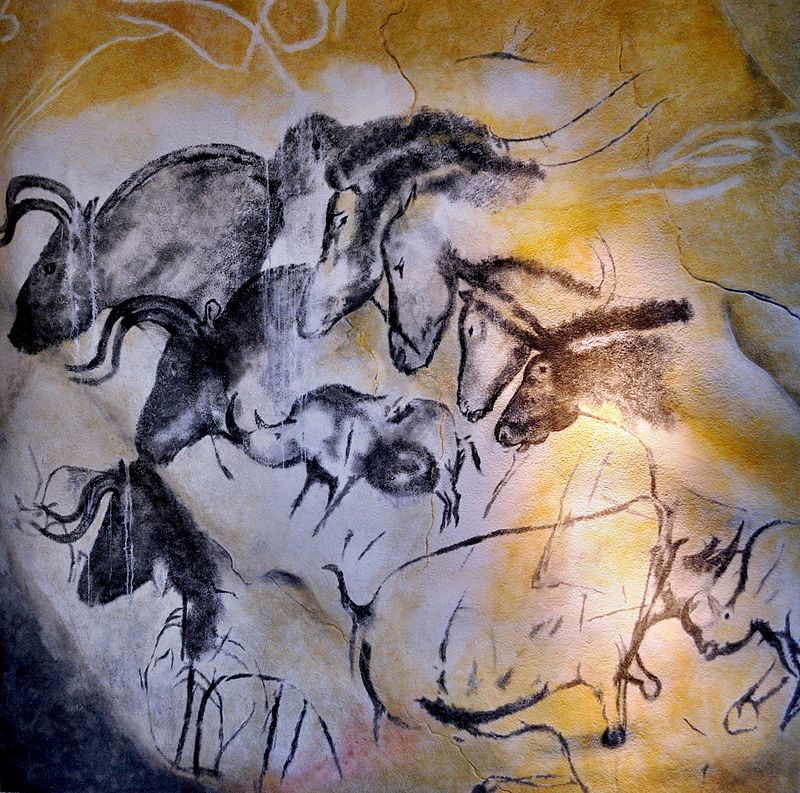
Particular cases of PTSD.
3.9. PTSD-2. After the flood the vegetarians of Noah’s family receive a command from God to eating the animals of the Ark. So arising the precedent for a new syndrome (Genesis 9, 2–7).
The consequences of Noah’s treatment of excessive attachment to animals describes the book of Genesis (Genesis 9, 20–27). In the language of psychology such sad events have received the name of substitution, and in the further displacement as an option of psychological protection from the cure which in the form of behest is given to Noah’s family. Nobody does not want to eat flesh of favourite animals and birds. The soul of Noah’s rises against forced treatment. The Patriarch gets drunk and ready to damned God Himself for the unbearable hardships of life.
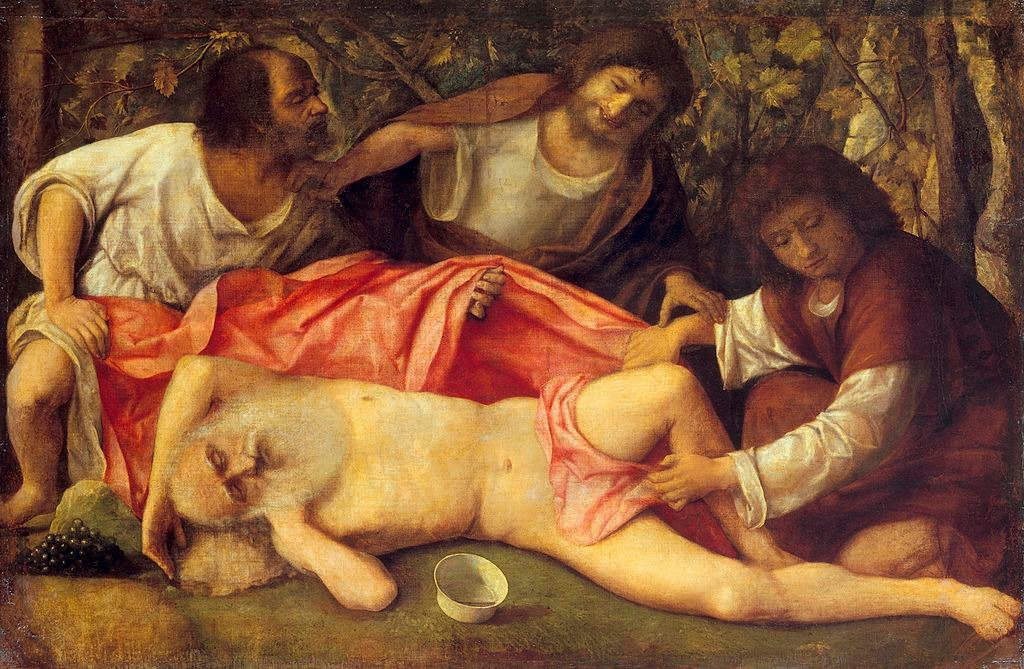
Despite the inhuman conditions of existence, the man of the Wurm era was predominantly vegetarian. This is evidenced by researches (Hockett and Haws 2005, p. 21; Zaatari at al. 2016). They again and again confirm — on earth there was an insignificant number of animals. Neanderthals quite often fell into stomachs of Noah’s descendants, but this topic is being boycotted by historians and archaeologists because of fear of losing their jobs (McKie 2009).
3.10. PTSD-3. Tower of Babel (Genesis 11, 1–9). The first “Babylon” means the place, where Noah’s tribe tried to realize the only possibility in those conditions not to dissipate all over the earth in search of rare then game animals (Kuraev 2009, p. 263). By this time, each family had its own opinion, which animal is better for the tower. This is and have those very same languages mentioned in the Bible (Genesis 11, 7). After the season of hunt all families of the Ark’s tribe gathering together on the plain Shinar. This idea to build a city and a tower was born in the next border state of the psyche of hungry people. Collective response to the planet without animals and birds was the idea of creating a whole agrotechnical complex. For this purpose, the biblical tower and the satellite city were built, which in the smallest details repeated the experience of the first world.
The implementation of this plan would have avoided starvation thanks to the producing economy livestock farm or poultry farm (the author’s reconstruction). As a result, God has activated the “tongues”, or the personal conviction of everyone that it is this or that kind of beast, the birds are the best for the tower. Everyone praised and extolled the hunting qualities of his beast or animal. It is clear that soon the hunters and gatherers, who had not yet lost their memory of agriculture and the cities of the first world, ceased to understand each other. Scattering and gradual savagery became inevitable (Men’ 1992, p. 112).
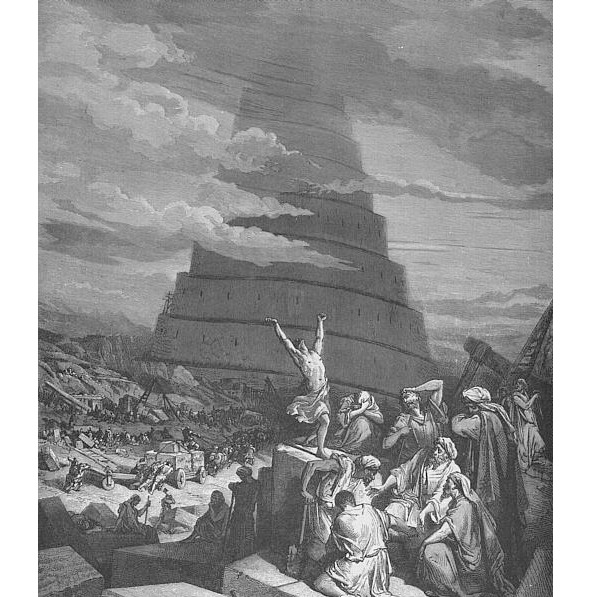
The hostility of the phratries in the best way possible explains the plot of “the confusion of tongues” in the Bible. In poultry farming, most often engaged by women. In fur farming by men. It may well be that because of the birds, quarrels between the descendants of Noah began. They could act as the most acceptable option in the conditions of protein starvation. Speed of reproduction of bird’s meat is several times higher, than in livestock production. The conflict between men’s and women’s phratries forms the basis of this biblical episode.
“The Australian concept of what we have here termed opposition is a particular case of using Association through opposition, which is a universal feature of human thinking and that encourages us to think in pairs of contrasts: high and low, strong and weak, black and white. But the Australian notion of opposition combines the idea of a pair of opposites with the idea of a pair of rivals” (Ibid, 118) — grabs from the lecture of analysis of the phratries of Radcliffe-Brown Levi-Strauss (Levi-Strauss [1964] 1991, p. 90).
“This contraposition of primitive ‘collectives’ is reflected in the myths about the struggle between totems (myths about the battle of the wedge-tailed eagle with a crow and the like). It is not by chance that these myths and other traces of the hostility of the groups refer mainly to phratries — the oldest of the social groupings of Australians — and to their totems. The mutual alienation of phratries, each pair of which was a primitive tribe, was, apparently, a very characteristic feature of the life of that era. The traces of this estrangement of phratries have been preserved, as is known, in the customs and folklore of very many peoples of all parts of the world. Totemism in its most ancient form — the totemism of phratries — was, apparently, the most direct expression of the opposition of phratries and the inner isolation of each of them. After the fission of phratries into smaller generic groups and after the loss the value of the main social groupings in phratries, the features of totemism was transferred to ‘clans’ (‘totemic groups’), that is, early-term communities” (Tokarev 1990, pp. 63–64).
“In any case, it is impossible to forget that totems of phratries were the most ancient totems, and them are, as a rule, birds whose communication with any certain territory could never be solid. In a word, the choice of a totem could be defined by the reasons which don’t have for us essential value” (Tokarev 1990, p. 66).
Spencer and Gillen (Spencer and Gillen 1899, pp. 179–183) have opened at Australians the ceremony of Intichiuma — multiplication of the totem, which, however is not used natives during usual time for food. The vegetarianism is identical tabooing concerning the totem’s of clan. Caregiving behavior in relation to animals of the Ark is identical to ceremonies of the multiplication of everything living. G. Roheim intuitively notes, that the totemic repositories Churinga’s of the tribe Arunta are nothing but the symbols of the mother’s womb, and Churingas themselves are symbols of the human embryo (Roheim 1925, p. 355).
Awareness of the reality of the annihilation of all living things on the planet is the main reason for the practice of Intichiuma, which at first was universal in the multiplication of all living things. “Which of the elements of the totemic complex existed in the era of totemism? On the basis of archaeological data, it should be recognized that in this complex, along with the belief in the origin of the totemic ancestors, only Intichiuma, for, as we recall, a significant part of the images can only be interpreted in this sense. It should be noted that the rites of reproduction, like hunting magic, concerned not one species of animals, but many. This shows that communication with one species of animals has not yet been established” (Khaitun 1958, p. 106). The rite of Intichiuma in Australia. To its execution start hungry, completely naked and at first one or more young people shedding their blood on the ground. Because “so established by the ancestors”. And the duration of this period is said by the rite of Intichiuma, the staging of which could last several months in a row. And sometimes only a few hours.
“At the same time, all Australian tribes of the Intichiuma are associated with myths about the ‘ancestors’ of the times of Alcheringa, the adventures of which are staged, dramatized or glorified. The presence of these ‘ancestors’ is considered necessary for the effectiveness of the ceremony” (Khaitun 1958, p. 44). Noah and his descendants it and there are those selfsame “ancestors”. Their presence is necessary, because they were the first to pray for the multiplication of all living things and their prayer was heard. They survived and became the beginning of a new civilization. Recollection of these “ancestors” bear a characteristic detail: they all violate exogamous prohibitions. The absence of exogamy in the marital relations of the distant past explains why exogamy is disturbed during the rendition of the Corroboree in Australians (Spencer and Gillen 1899, pp. 418–419) It is not difficult to understand, why. There are four pairs of people left on Earth. Of them are reproductive — three.
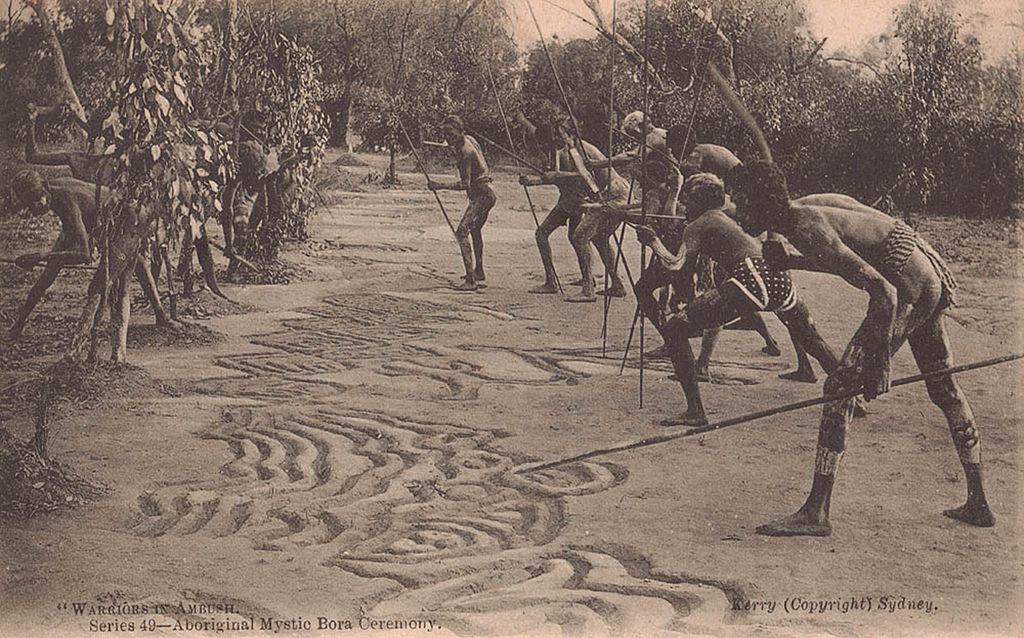
4. Groups of animals
Inasmuch as in these groups the biological prevails over the social, let’s consider them from the point of view of the synthetic theory.
4.1. If you look at the ship Noah with the view of an evolutionist, the supporter of the modern synthesis, he will say this: “In relation to all living things, the method of artificial selection was used, on the gap. Changes in nutrition (forages), waters, violation of biorhythms, restriction to a minimum of a locomotion, manipulation of objects, inactivity, the hypodynamia, sensorial starvation, a chronic stress, neighborhood animals antagonists could lead to a surge of mutations among pairs of individuals that represented all the former species diversity”.
The disruptive selection after a year in the Ark has only intensified. The ship has not delivered to a place of former settlement of animals and birds, and threw them in mountains, where these animals were once again awaited by a drastic change in the conditions of life, water, climate, fodders, the absence of relatives (absence of the gene material for exchange).
The disaster made many survival skills unnecessary. As a consequence, many organs of surviving birds and animals, as well as humans, have undergone atrophy. This is situation is well known to any biologist — atavisms and rudiments are present in all species of animals and birds (the vestige). All the inhabitants of the ark had to developed the unfamiliar territories, remote from their former habitats for tens of thousands of kilometers. Their descendants promptly formed all new and new biogeocenoses, the conditions of which were completely unfamiliar to the ancestral forms. Therefore, with the release of the surviving representatives of species, an unprecedented parade of rudiments and atavisms has begun.
In the materials of the synthetic theory it is described as follows. “In the structure of almost any organism, it is possible to find organs or structures that are relatively underdeveloped (devoid of any important parts compared to homologous structures of similar forms) and have lost their main importance in the process of phylogenesis: such organs or structures are called rudimentary”.
Thanks to the Galapagos flightless cormorant (Latin Phalacrocorax harrisi), Darwin was the first to who correctly explained the presence of atavisms and rudiments in animals, deducing out atavisms from ancestral forms, inasmuch as in a norm they do not meet. Atavism so and is translated from the Latin athavis — ancestor.
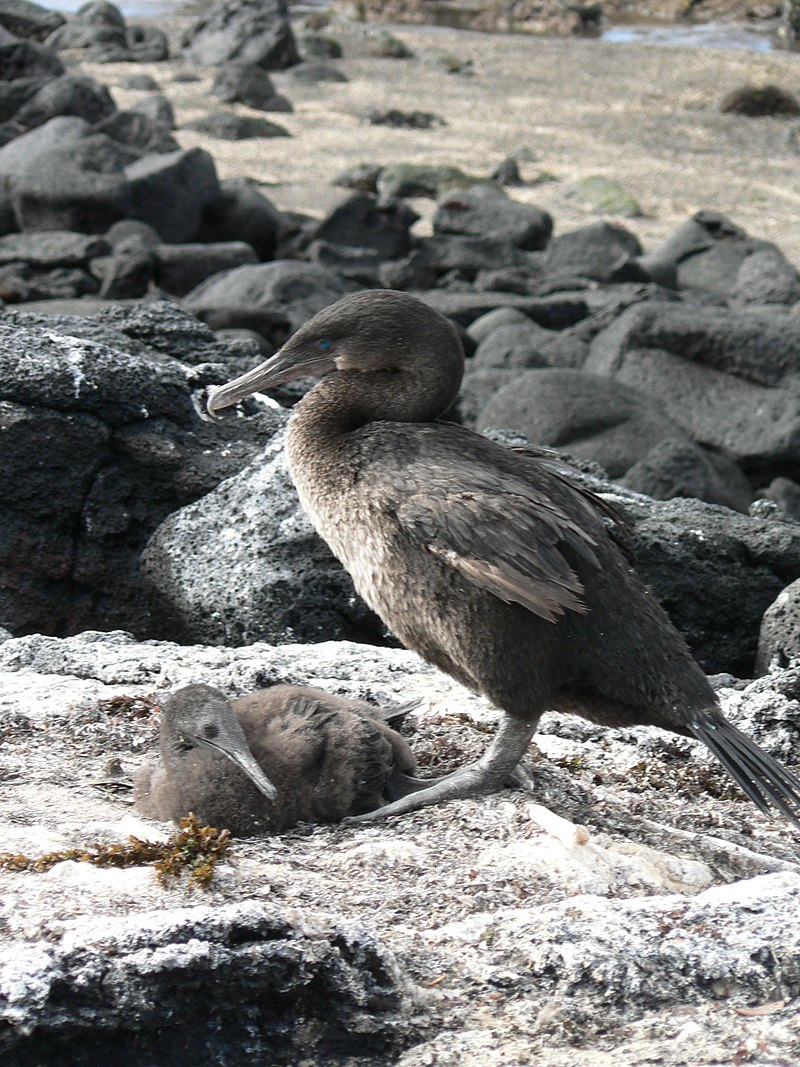
Бесплатный фрагмент закончился.
Купите книгу, чтобы продолжить чтение.